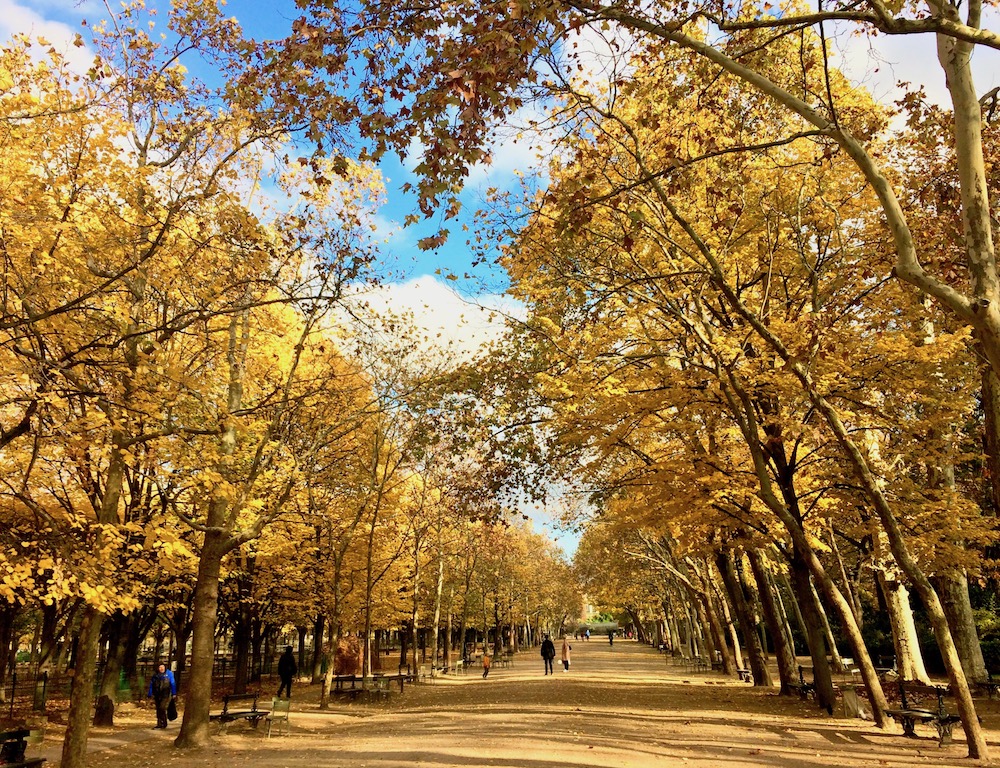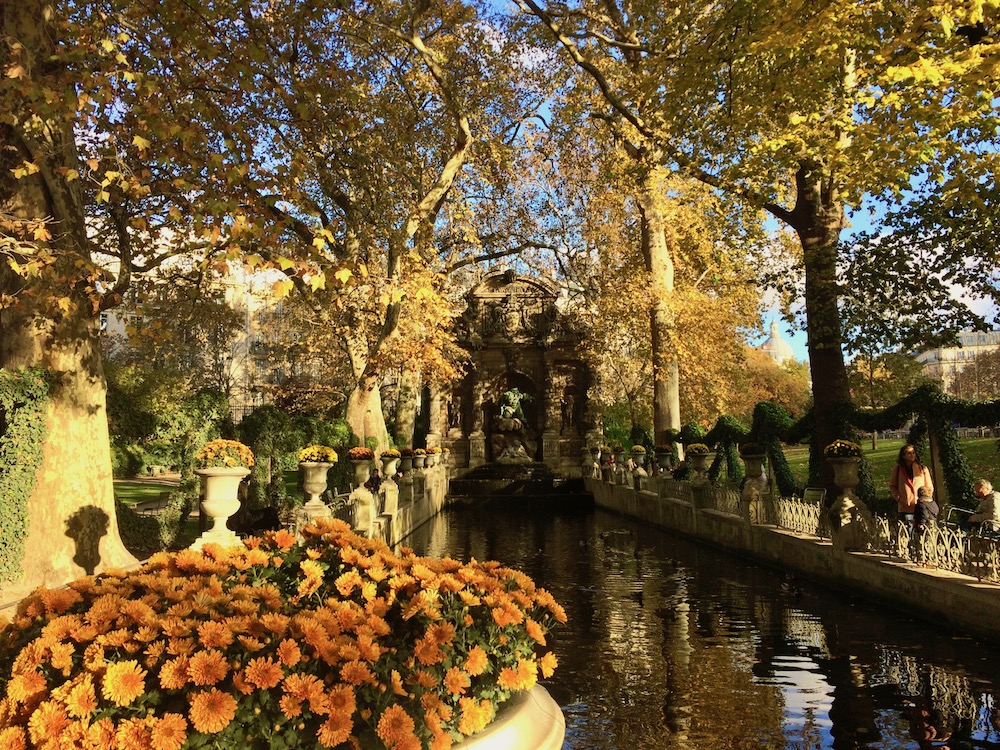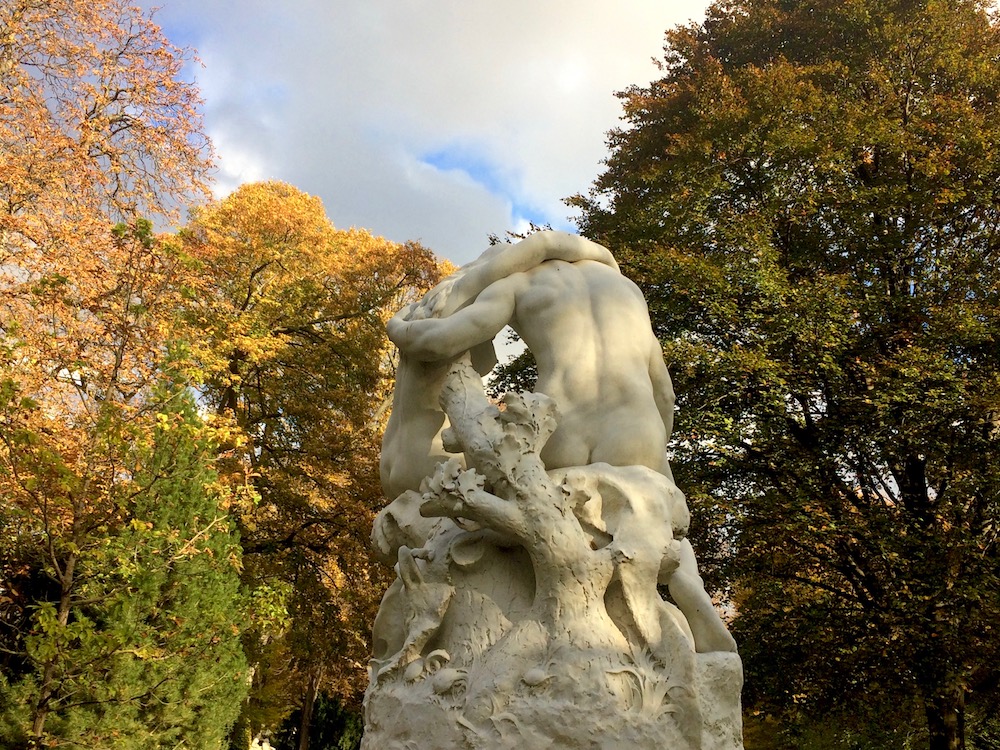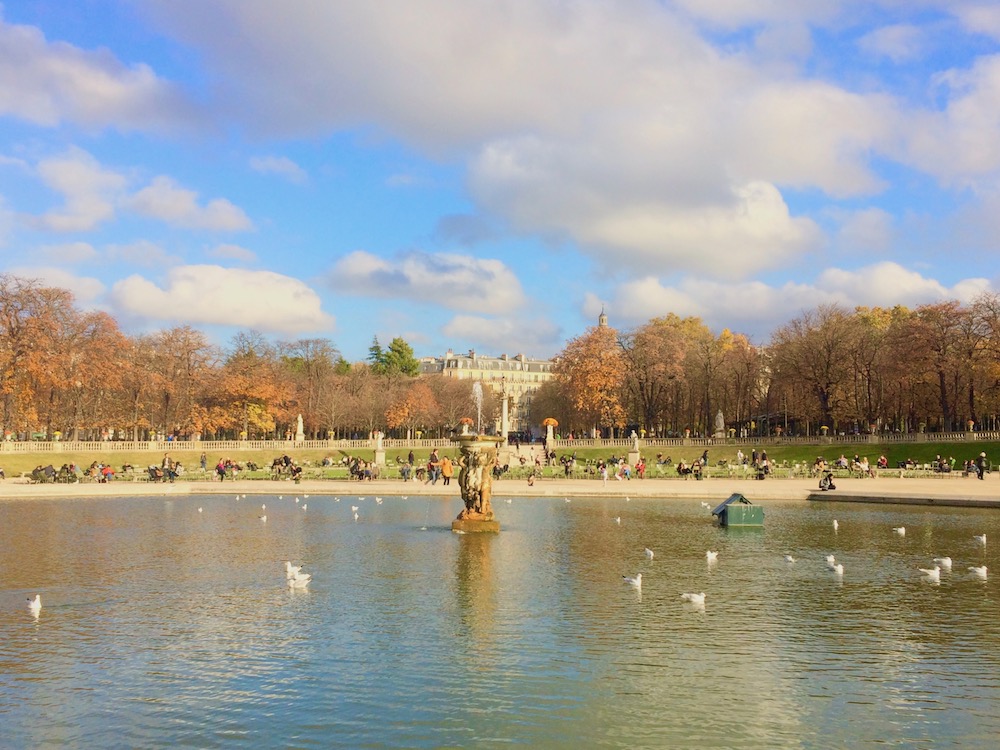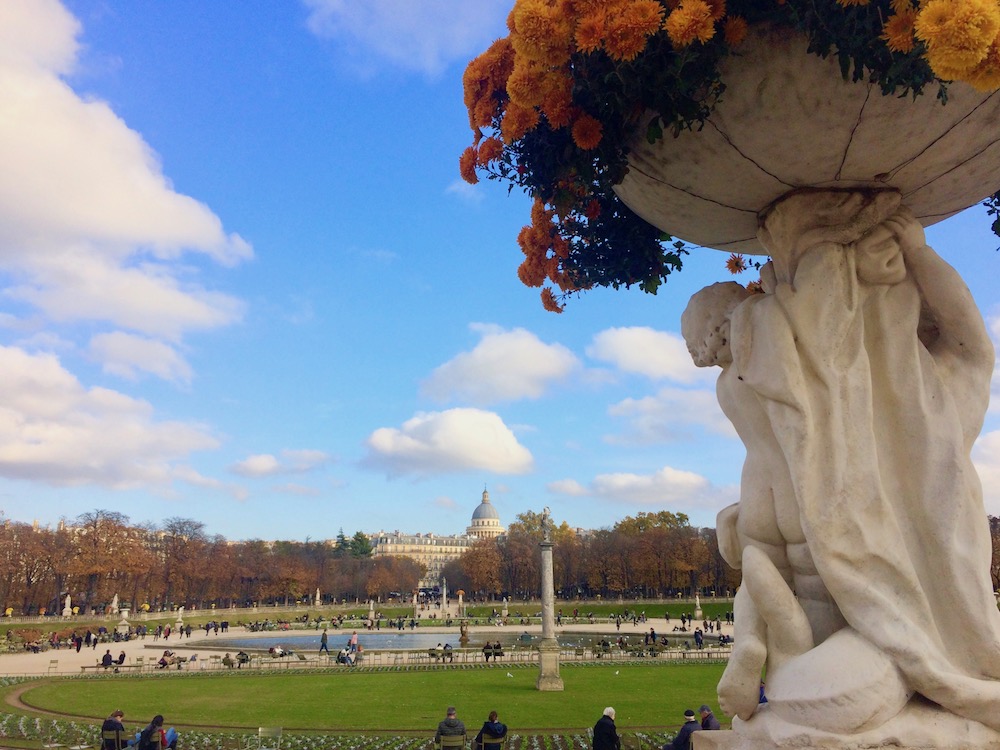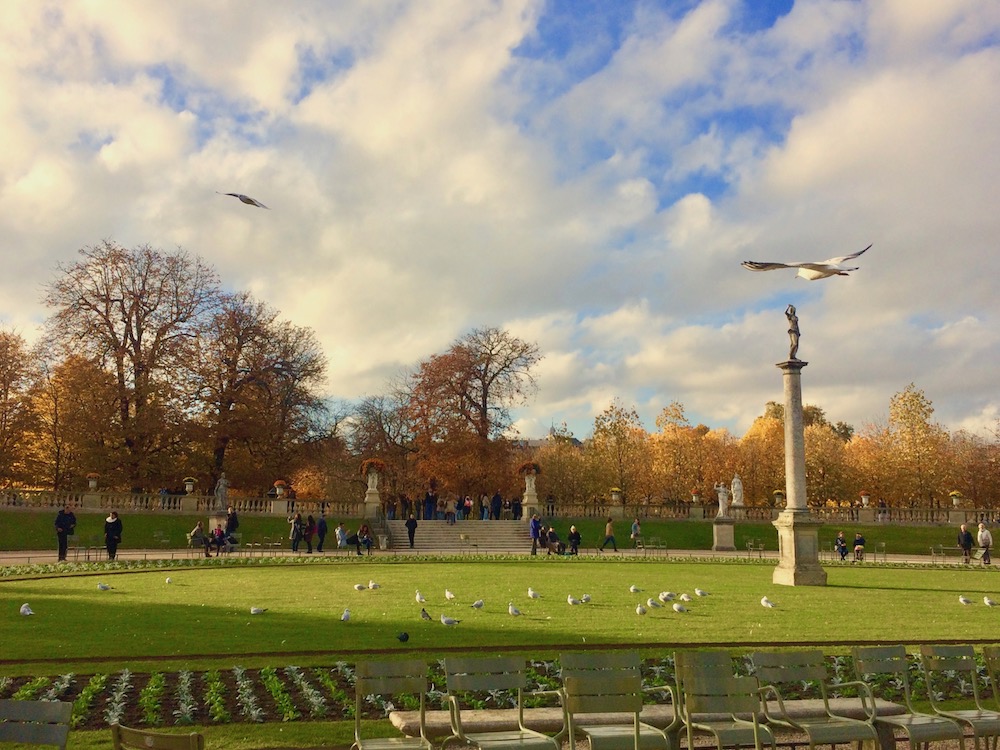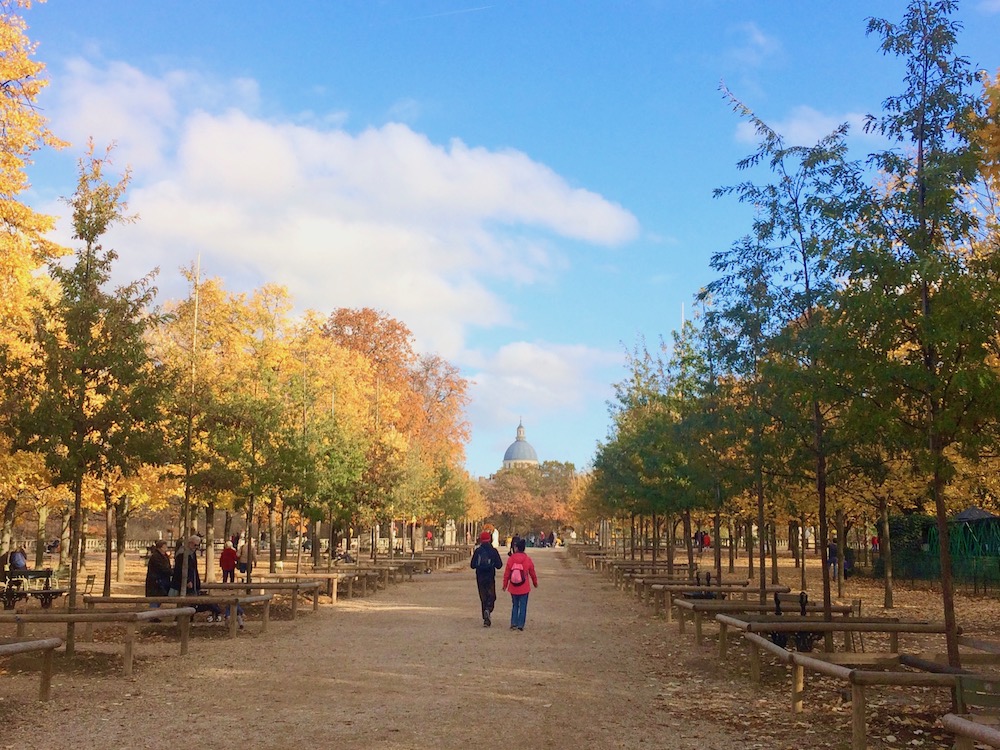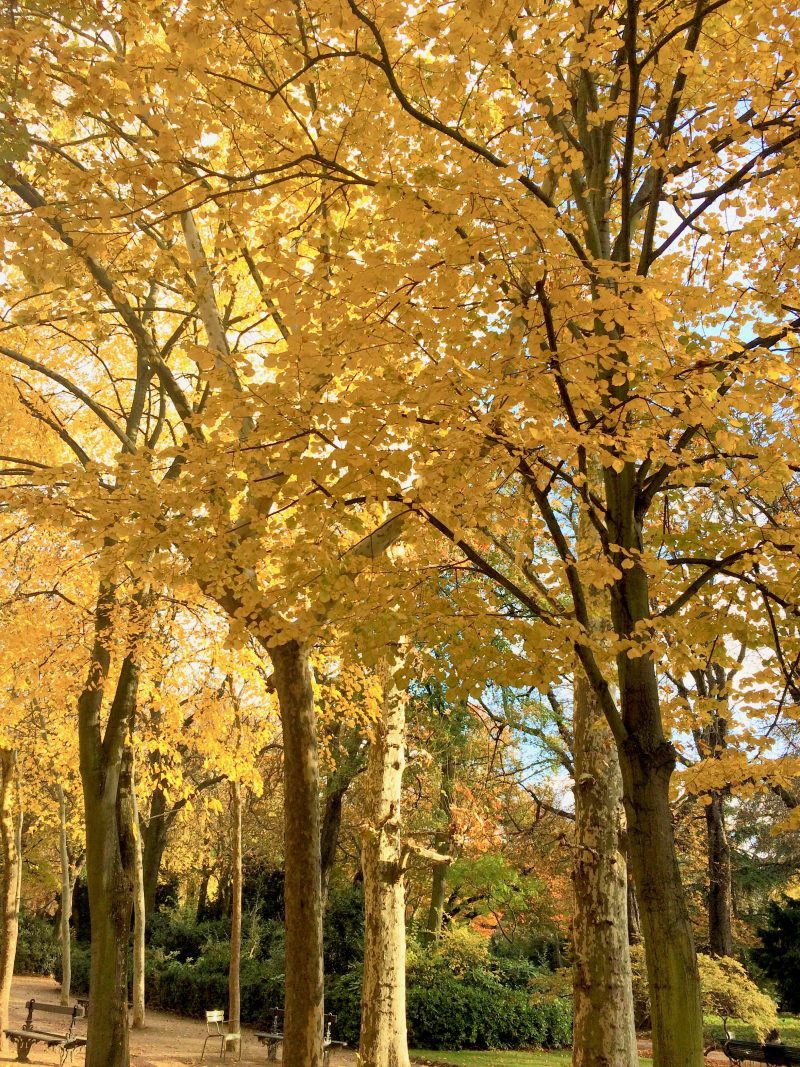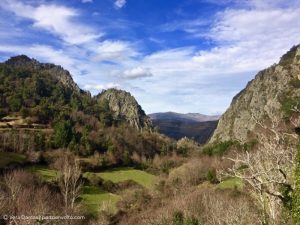O Jardin du Luxembourg é um dos lugares que revisito sempre nas minhas viagens a Paris. Este jardim histórico tem algo que me atrai irremediavelmente: uma joie de vivre sempre presente, que se adapta às várias estações do ano. A minha última viagem a Paris foi no Outono e o Jardin du Luxembourg estava quase inteiramente vestido de amarelo. As copas das árvores lançavam folhas brilhantes sobre a neblina.
Neste jardim uma sensação de tempo sobrepõe-se à velocidade dos dias e prolonga-se pelos espaços. E há um lugar especial, quase escondido, onde a sensação de intemporalidade prevalece: a monumental Fonte de Médicis, debruçada sobre um espelho de água entre sombras e raios de luz. Soa a italiano? É porque há mais de 400 anos a rainha Maria de Médicis criou este jardim inspirada no jardim Boboli, na Florença da sua infância. O seu neto Luís XIV, viria a marcar para sempre a paisagem de Paris, mas essa é uma história que contarei mais tarde.
Por agora centremo-nos nas cores do Jardin du Luxembourg. As suas muitas cores transportam-me para o mundo das pinturas pontilhistas que vivem no Museu d’Orsay, pintadas por grandes magos subtis da cor. E este jardim é, ele próprio uma obra de arte. Divide-se em duas partes: uma com jardins ao estilo inglês e outra com jardins ao estilo francês, ligados por um bosque geométrico e povoados por mais de 100 esculturas. No centro de tudo, um grande lago.
Da primeira vez que vi o lago do Jardin du Luxembourg, veio-me de imediato à memória uma história da Anita – que na verdade é a francesa Martine, ilustrada por Marcel Marlier – em que esta e os seus amigos lançavam pequenos barcos no lago de um jardim, numa tarde de Verão. Acredito que o lago que serviu de inspiração a Marlier tenha sido o deste jardim, onde lançar veleiros é uma tradição antiga.
Tive a sorte de lá estar quando aconteceu um episódio que podia bem fazer parte de um livro da Anita. Numa tarde de Agosto em que passeava pelo Jardin du Luxembourg, vi crianças a brincarem com os seus veleiros no lago. Um dos veleiros tombou e estava em risco de naufragar, bem no centro do grande lago, longe do seu aflito pequeno marinheiro. A inquietação instalou-se entre crianças e pais em redor do lago, que tentavam encontrar uma forma de resgatar a embarcação. Foi então que vi um polícia chegar, bem disposto e decidido. De início pareceu-me estar apenas a evitar que alguma criança caísse ao lago por causa da agitação. Mas, logo de seguida, afastou-se e regressou munido de uma espécie de grande vara de pau. Então o policier pede à “audiência” que se afaste para poder manobrar a vara em segurança. Silêncio. O tempo pareceu-se suspender-se naqueles minutos. Quando alcançou o veleiro, as crianças irromperam num coro de “vivas!” e o barquinho foi devolvido ao seu pequeno dono, que o recebeu com um sorriso brilhante, muito agradecido. Então o policier afasta-se com sentido de missão cumprida. O ambiente no jardim ficou ainda mais caloroso, pleno da joie de vivre tão própria dos parisienses.
Este é um jardim memorável que marca Paris há séculos. Entre a intemporalidade dos mármores e o sempre cambiante ciclo das árvores e flores, resplandece de vida. Os parisienses passeiam-se nele demoradamente, contemplam-no a partir das várias esplanadas, bancos e relvados ou mesmo das janelas do Palais du Luxembourg. É também um daqueles lugares queridos dos parisienses, o que me faz gostar ainda mais de lá estar e ouvir falar predominantemente francês. Definitivamente um dos meus lugares favoritos de sempre.
The Luxembourg Garden is one of the places I always revisit in my trip to Paris. This historic garden has something that attracts me irredeemably: an ever present joie de vivre, adapting itself through the various seasons of the year. My last trip to Paris was in autumn and the Luxembourg Garden was almost entirely dressed in yellow. The treetops threw bright leaves over the mist.
In this garden a sense of time extends through the spaces. And there is a special, almost hidden place where the sense of timelessness prevails: the monumental Fountaine de Médicis, perched on a mirror of water between shadows and rays of light. Sounds Italian? That´s because 400 years ago this garden was created by the queen Maria de Médicis. And her inspiration was the Giardino di Boboli, in her childhood Florence. His grandson, Louis XIV, would mark the landscape of Paris forever, but that is yeat another story.
For now lets stay at the Luxembourg Garden. Its elegance and colors convey me to the world of the pontilist paintings I love to see at Museum d’Orsay. This garden is itself a work of art. It is divided into two parts: one with English-style gardens and the other with French-style ones, connected by a geometric wood and populated by more than 100 sculptures. In the center of everything, a large lake.
The first time I saw the lake of theLuxembourg Garden, I was instantly reminded of a Debbie’s book – which is actually the French Martine, illustrated by Marcel Marlier – in which she and her friends played wirh small sailboats in a garden lake on a sunny afternoon. I believe that the lake that inspired Marlier was the one ofLuxembourg Garden, where launching sailboats is a longtime tradition.
I was lucky to be there when an episode happened that might well be part of a Martine’s book. One August afternoon when I was strolling through the garden, I saw children playing with their sailboats on the great lake. One of the sailboats toppled and was at risk of sinking, right in the center of the great lake, away from his distressed little sailor. Uneasiness settled among children and parents around the lake, who were trying to find a way to rescue the boat. It was then that I saw a well humoured policeman arrive. At first it seemed to me that he was merely preventing some child from falling into the lake because of the agitation. But then he went to a nearby pavilion and came back with a kind of a long wooden stick. Then the policeman asked the “audience” to move away so he can maneuver the stick safely. Silence. When the he reached the sailboat, the children bursted into a chorus of “cheers!” and the sailboat was returned to his little owner, who received it with a bright, very grateful smile. Then the policeman departed with a sense of mission accomplished. The atmosphere in the garden was even more warm, full of the joie de vivre so typical of Parisians.
This is a memorable garden that has marked Paris for centuries. Between the timelessness of the marble statues and the ever-changing cycle of trees and flowers, it glows with life. Parisians stroll in it for a long time, gazing at it from the various terraces, benches and lawns, or even from the windows of the Palais du Luxembourg. It is also one of those places dear to Parisians, which is also why I love to be there and hear people speak predominantly French. Definitely one of my favorite places ever.

